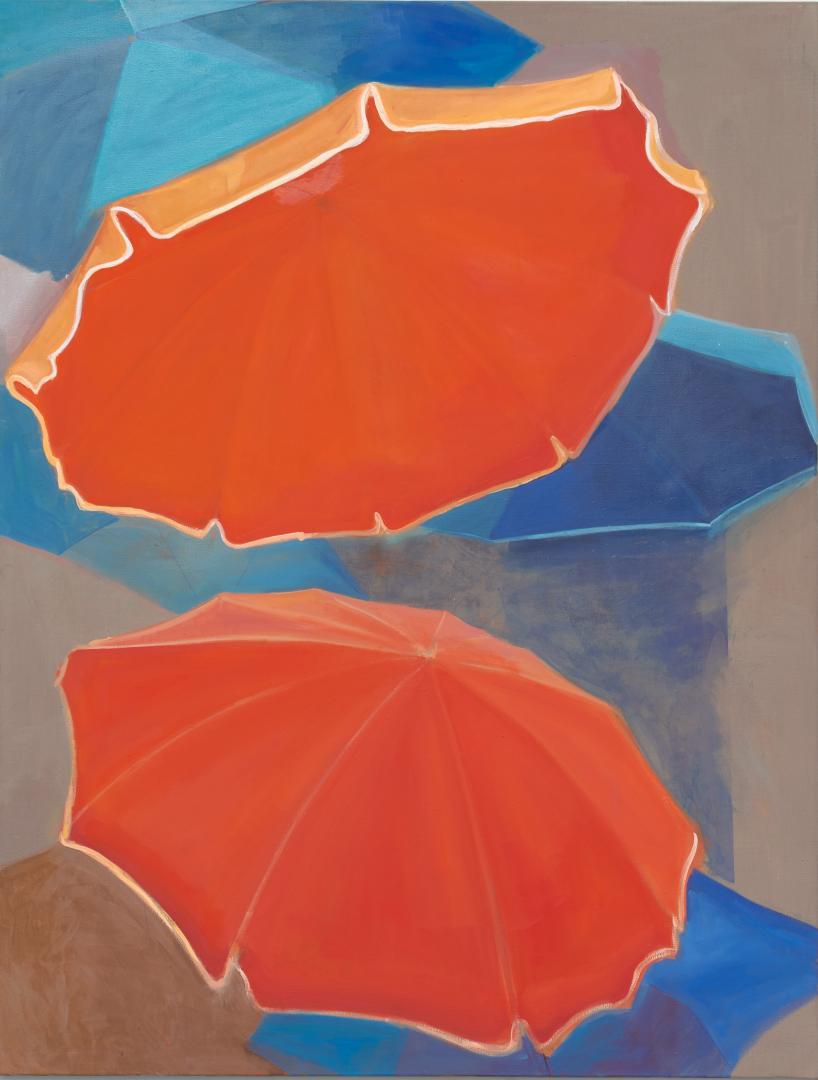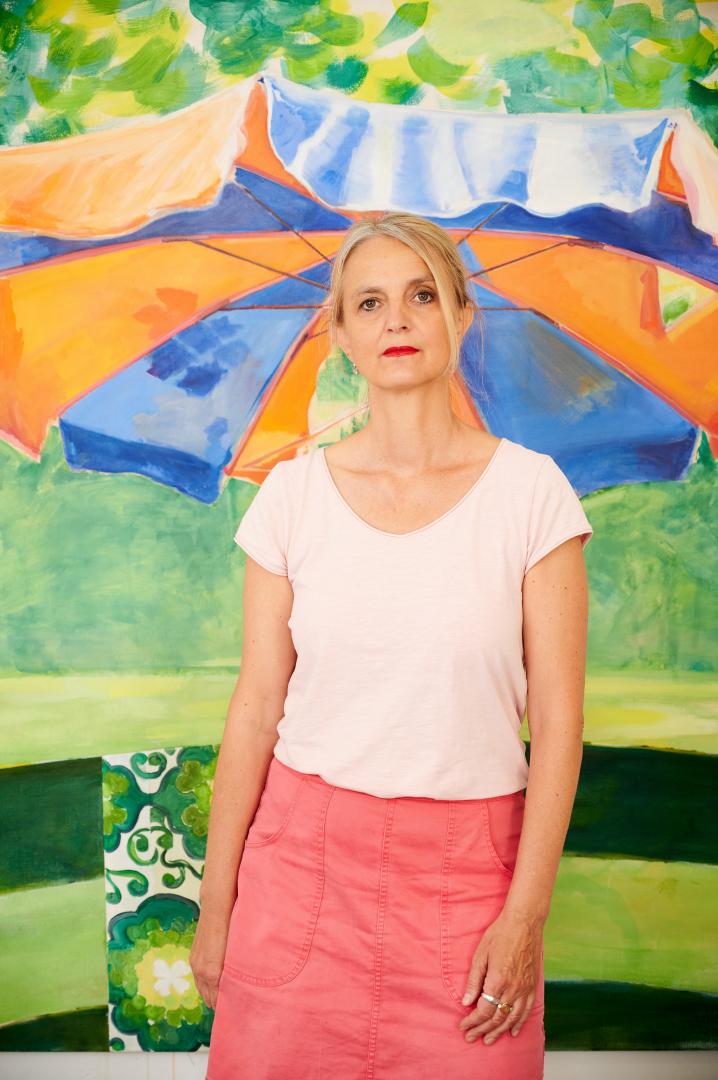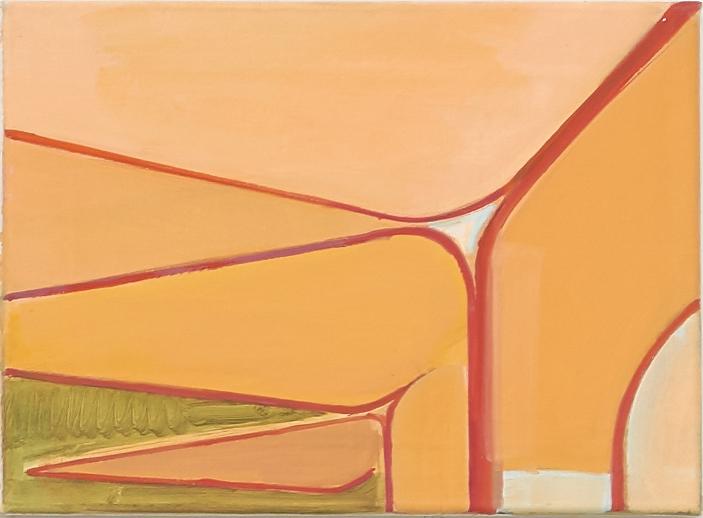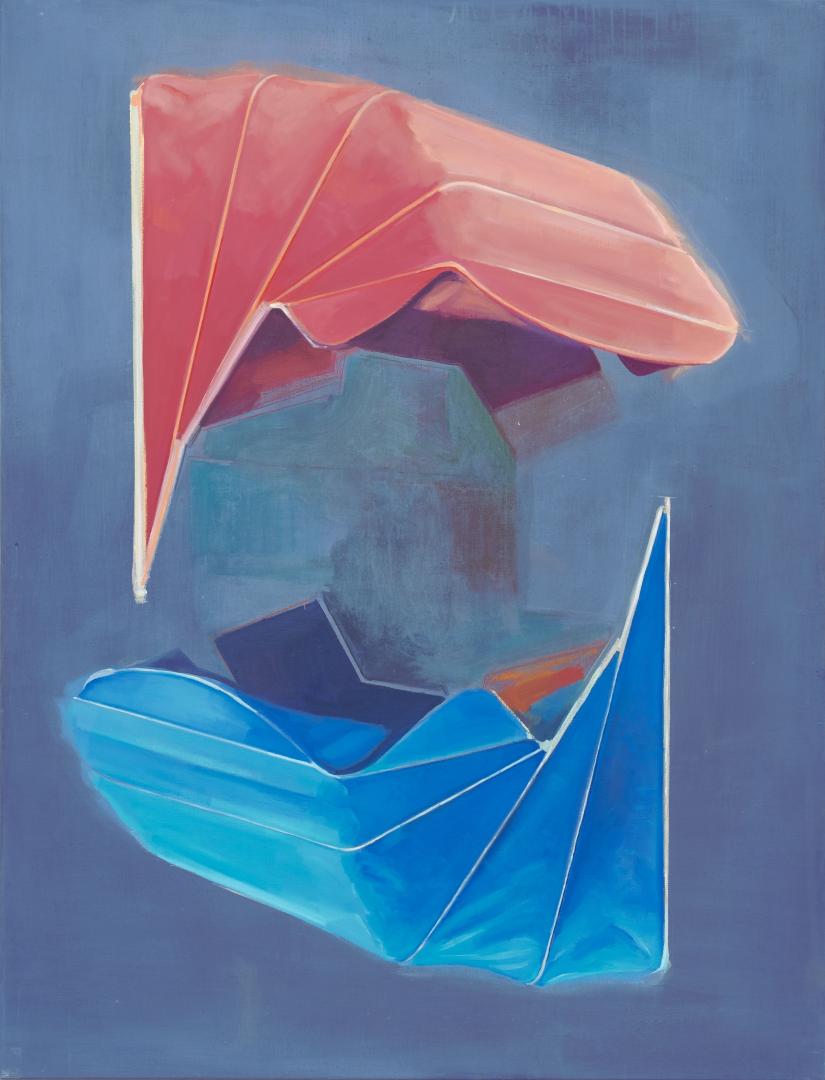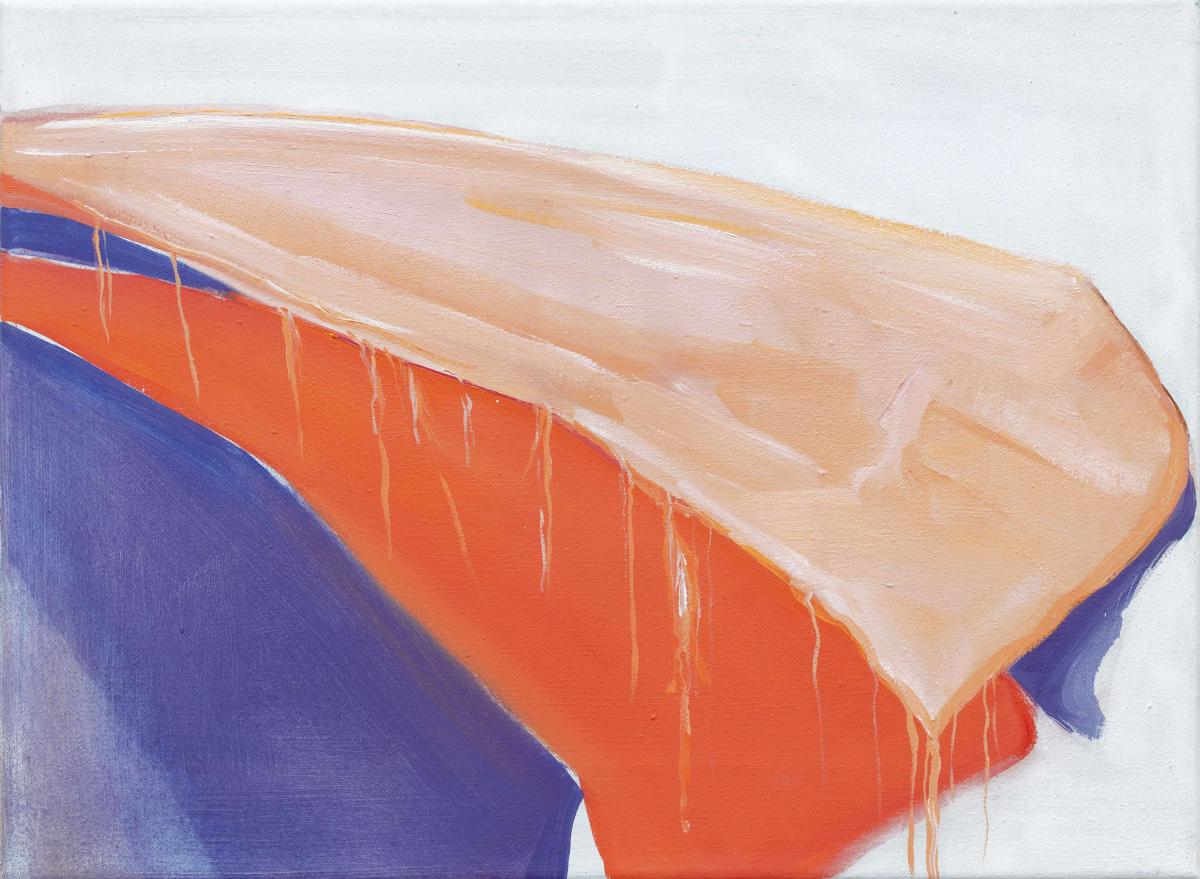Moni K. Huber is currently working on smaller architectural structures and forms such as kiosks, awnings, parasols, caravans, tents, as well as fabrics and patterns. These are memories of her first conscious travels in the 1970s, of carefree travel and the associated positive attitude to life – the utopia of freedom, travel, and the feeling that the world is open to us.
Moni K. Huber studied at the Real Academia de Bellas Artes de San Fernando in Madrid and painting at the University of Applied Arts in Vienna. She lives and works in Vienna. Work experiences have taken her to Germany, Argentina, Japan, Venezuela, and Mexico.
Her earlier series of works focused on abandoned buildings, hotel ruins from the 1960s in the former Yugoslavia, and pavilion architecture. Moni K. Huber travels back to the time of her childhood and youth and explores the aesthetics of the formal languages of the time. For example, one of her subjects is the iconic K67 container by the Slovenian architect Saša J. Mächtig from the 1960s, which served as a modular newspaper and sales kiosk. Umbrellas from the 1950s, tents, caravans, wallpaper, and fabric samples from the 1970s bridge the gap to a new perspective on familiar objects, viewing them from a new angle. In oil on canvas, watercolor, or gouache, she removes the motifs from their original context. At first glance, the pictures have a narrative feel, probably because the viewer connects the motifs with personal associations. For the artist, the motifs offer the opportunity to explore the inherent parameters of painting. This often results in small-format paintings in which she isolates details of the motifs and sets them in several variations as abstract, constructive forms against a neutral background. For Moni K. Huber, the focus is not on their documentation, but on their formal pictorial content.
